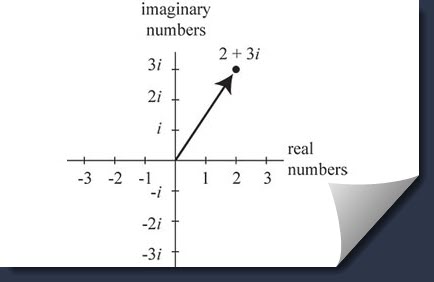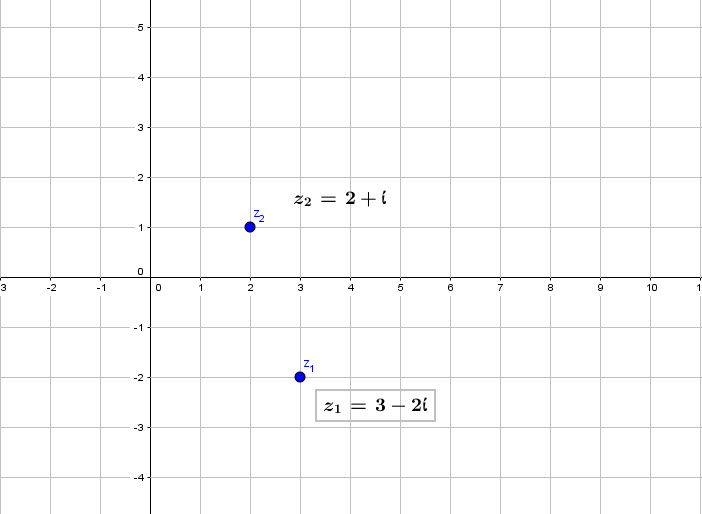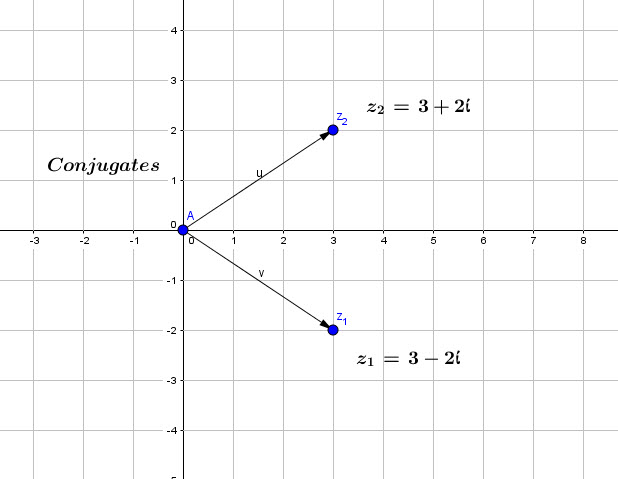
An introduction to Complex numbers
Complex numbers are numbers in the form of ![]() .
.
They are widely used and make lengthy solutions very short in various fields like Electrical Engineering, Navigation, etc…
In this form, ![]() and
and ![]() are real numbers. The unit
are real numbers. The unit ![]() is the imaginary unit . Please note that
is the imaginary unit . Please note that ![]() .
.
Both ![]() and
and ![]() are real numbers.
are real numbers.
If we take ![]() , the real number
, the real number ![]() is the
is the ![]() and the real part
and the real part ![]() is the
is the ![]() .
.
We may see:
![]() and
and ![]()
Around the 16th century, It became obvious that the solution of ![]() would be handy.
would be handy.
When representing the image of a complex number in the ![]() , the real part is projected in the
, the real part is projected in the ![]() while the imaginary part will be projected in the
while the imaginary part will be projected in the ![]() .
.
The quadrant rules we saw in earlier chapters remain the same.
An imaginary number is a number in the form ![]() where
where ![]() is a real number.
is a real number.
![]()
When a complex number has two components, we can represent it in the complex plane. This is called the Argand Diagram.
A point ![]() will then represent the complex number
will then represent the complex number ![]() .
.
We can call the ![]() , the
, the ![]() and the
and the ![]() the
the ![]() .
.
A point ![]() may be thought as a vector too. Adding
may be thought as a vector too. Adding ![]() to another complex number is a simple translation by vector
to another complex number is a simple translation by vector ![]()
![]() is a translation
is a translation ![]() units to the right and
units to the right and ![]() units up in the complex plane.
units up in the complex plane.

Equality of complex numbers
For two complex numbers to be equal:
![]()
we need to have the following:
![]() and
and ![]()
Example1:
![]() means:
means:
![]() and
and ![]()
Example2:
Find the values of ![]() and
and ![]() , the real numbers in the following equation:
, the real numbers in the following equation:
![]()
We have:
![]() , Real part
, Real part
![]()
![]()
![]() , Imaginary part
, Imaginary part
Finally:
Answer: ![]() and
and ![]()
Addition and subtraction of complex numbers
To get the sum or difference, we add or subtract real parts, then we add and subtract imaginary parts:
![]()
![]()
![]()
Product of complex numbers
If ![]() and
and ![]()
![]()
![]()
Example:
![]()
Conjugate of a complex number
If ![]() is a complex number, its conjugate is noted
is a complex number, its conjugate is noted ![]()
It can be represented as follows:

we can also note that:
![]()
If we consider a quadratic equation with ![]() , having two complex roots,we can easily see that these two roots are
, having two complex roots,we can easily see that these two roots are ![]() pairs.
pairs.
Properties of conjugates:
The sum and product of a complex number and its conjugate are real numbers.
![]()
![]()
![]()
![]()
![]()
![]()
![]()
![]()
![]()
Examples:
![]()
![]()
Quotients of complex numbers
We have to multiply the complex number in the denominator by its conjugate.
Let’s calculate: ![]()
![]()
We can now write:
![]()
Important:
For complex numbers ![]() and
and ![]() :
:
![]()
![]()
If the complex ![]() , we can write:
, we can write:
![]()
Express in the form of ![]() the following:
the following:
![]()
Solution:
![]()
Revisiting the quadratic equations
Solve for ![]() in
in ![]()
![]()
It means:
![]()
We know that:
![]()
We get:
![]()
First root: ![]()
Now we solve for the quadratic:
![]()
We have:
![]()
However: ![]()
This means
![]()
![]()
![]()
The third root is the conjugate:
![]()
Finally:
Answer: ![]() ,
, ![]() and
and ![]()


Be the first to comment